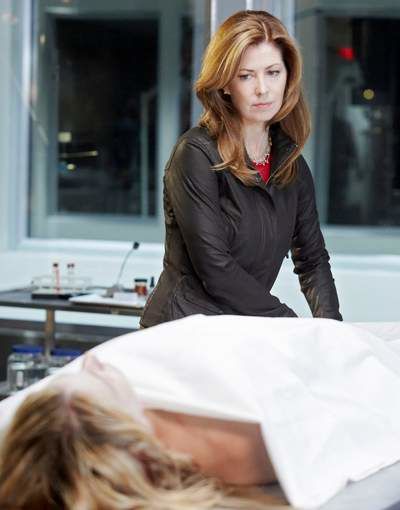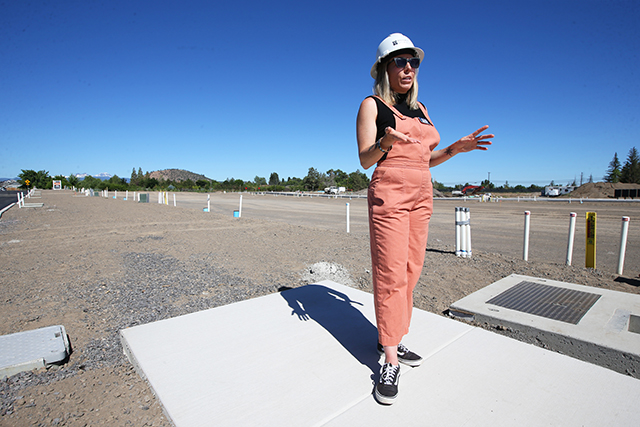Among the dead, a character finds life
Published 5:00 am Tuesday, March 29, 2011

- Dana Delany portrays Dr. Megan Hunt in a scene from “Body of Proof.” Hunt, once a successful neurosurgeon, has become a medical examiner in order to move on after experiencing a series of life-changing events.
Television dramas, at their cores, are about characters. What Dana Delany is doing, then, every day on the set of “Body of Proof” is character-building.
Delany is getting to know Dr. Megan Hunt, the lead character on “Body of Proof,” a medical mystery drama that will have its premiere on ABC tonight. Viewers may think they have seen this show before — whether “House” or some similar series — so character development might help distinguish it in a way that even the most serpentine homicide investigation cannot.
Trending
Hunt was conceived by Christopher Murphey, the show’s creator, as a cold, clinical but professionally successful neurosurgeon in Philadelphia whose life is upended by a divorce, the loss of custody of her daughter and a car accident. The show picks up five years after that accident, when Hunt has become a medical examiner — or, as the show’s producers like to say, an advocate for the dead bodies that are wheeled in and out of her office.
“She had a certain amount of power and success and drive, and then she lost all that,” Delany said. “What happens when you lose all that success?”
The question lingered in the air, as if the answer was still being developed. And it was. Television series are often won or lost in the first few episodes, after the main character has been created in the high-gloss pilot but as the creators are still learning about her. Giving not just life, but depth, to a character — creating one viewers will come back to see each week — is one of the most critical parts of the writing and production process.
Weeks earlier, in the “Body of Proof” writers’ room in Burbank, Calif., Sunil Nayar, an executive producer, and a team of writers refined a scene that had Hunt conducting an autopsy on someone she had seen once before as a patient, back in her neurosurgery days. To reinforce Hunt’s clinical demeanor, she announces that she recognizes the subject not from her face, but from a scan of her brain. A writer, Bryan Oh, interjected with a question. “Now is Megan the kind of person who would be making a kind of excuse about why she didn’t recognize this person?” he asked. “Or is she really beating herself up over it?”
Nayar suggested that her reaction would fall somewhere in between.
“This was a time in my life where the science mattered and the person didn’t,” he said, adopting Hunt’s perspective.
Trending
In Hunt there’s a touch of the character played by Hugh Laurie in Fox’s long-running “House,” in that “they’re so good at what they do that they’re miserable,” David Platt, a director on the series, said. There is also a bit of Alicia Florrick, the litigator played by Julianna Margulies on “The Good Wife” on CBS, as both are strong female leads, a rarity on network television. Delany is joined by Jeri Ryan, as the chief medical examiner, Dr. Kate Murphy; and by Sonja Sohn and John Carroll Lynch, who play detectives.
The conversations in the writers’ room not only build out Hunt’s back story, they also give new shape to the character.
Months into the writing, Sam Humphrey, supervising producer on the show, said: “I’m still discovering her. I’m still learning about her.” He added with a laugh, “Of course you can’t go have coffee with her.”
Sometimes during the struggle to divine their creation’s actions and motivations, the writers and producers bounce ideas off of Delany, who is also an executive producer.
“In many ways she’s not that far off from myself, weirdly enough” Delany said. “Underneath it all, she is a nerd, and that’s what excites her — the science.”
On a Friday last August in Providence, Murphey and Matthew Gross, an executive producer, were lounging in Gross’ office, talking through Hunt’s relationship with her mother, Joan Hunt, played by Joanna Cassidy.
“Every time they’re together, they know there’ll be fireworks, yet they’re inextricably connected,” said Gross.
The fireworks also allow for moments of humor, needed to balance the gravity of the cases. But those moments can’t come in the autopsy room, Gross said, because it would undercut Hunt’s role as a respectful advocate for the dead.
Since the first episode Delany has toned down the abrasiveness of her character a bit.
“Now it’s more, ‘She’s just trying to do her job,’ ” she said.
‘Body of Proof’
When: 10 tonight
Where: ABC
‘Body of Proof’
When: 10 tonight
Where: ABC








